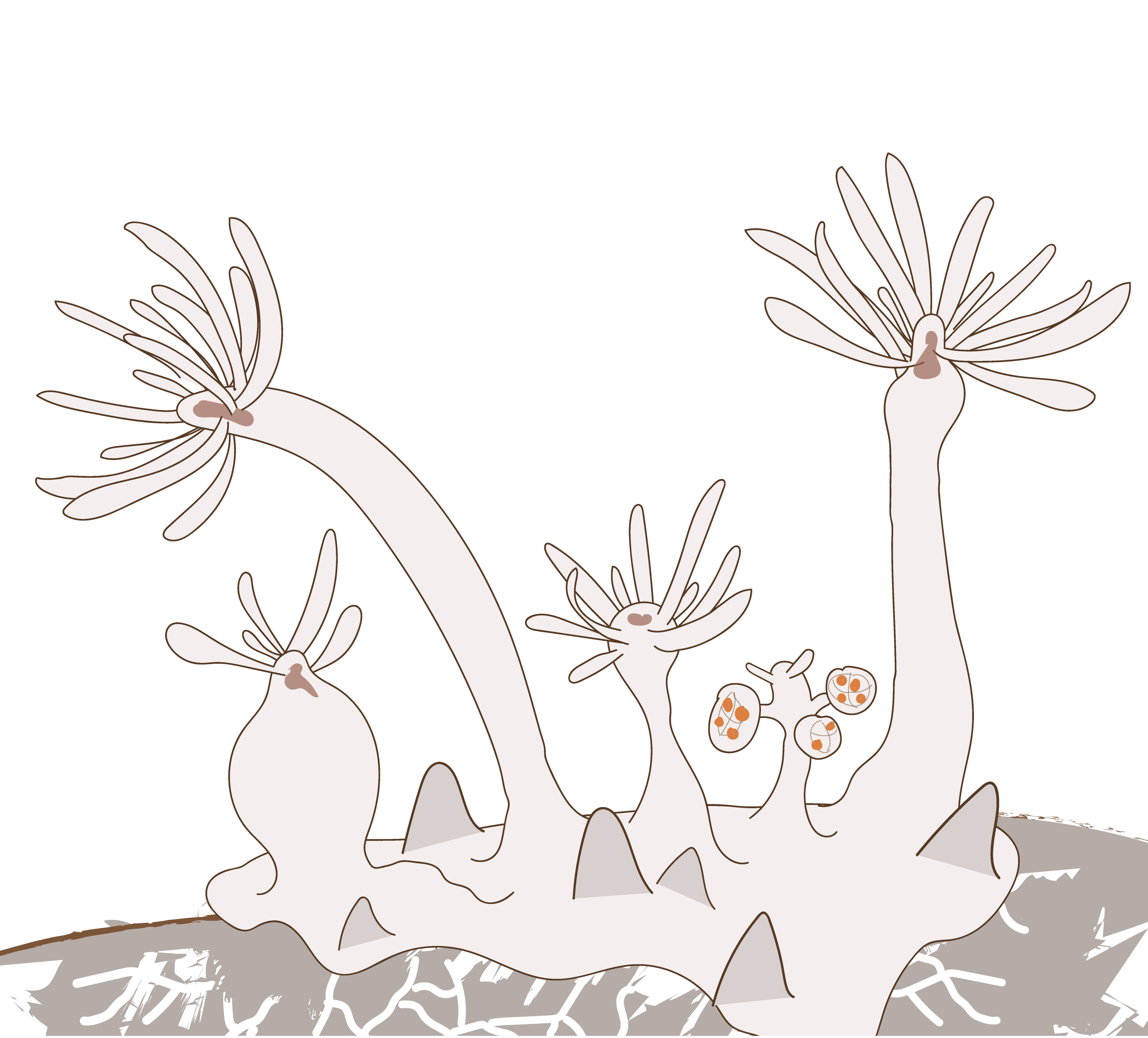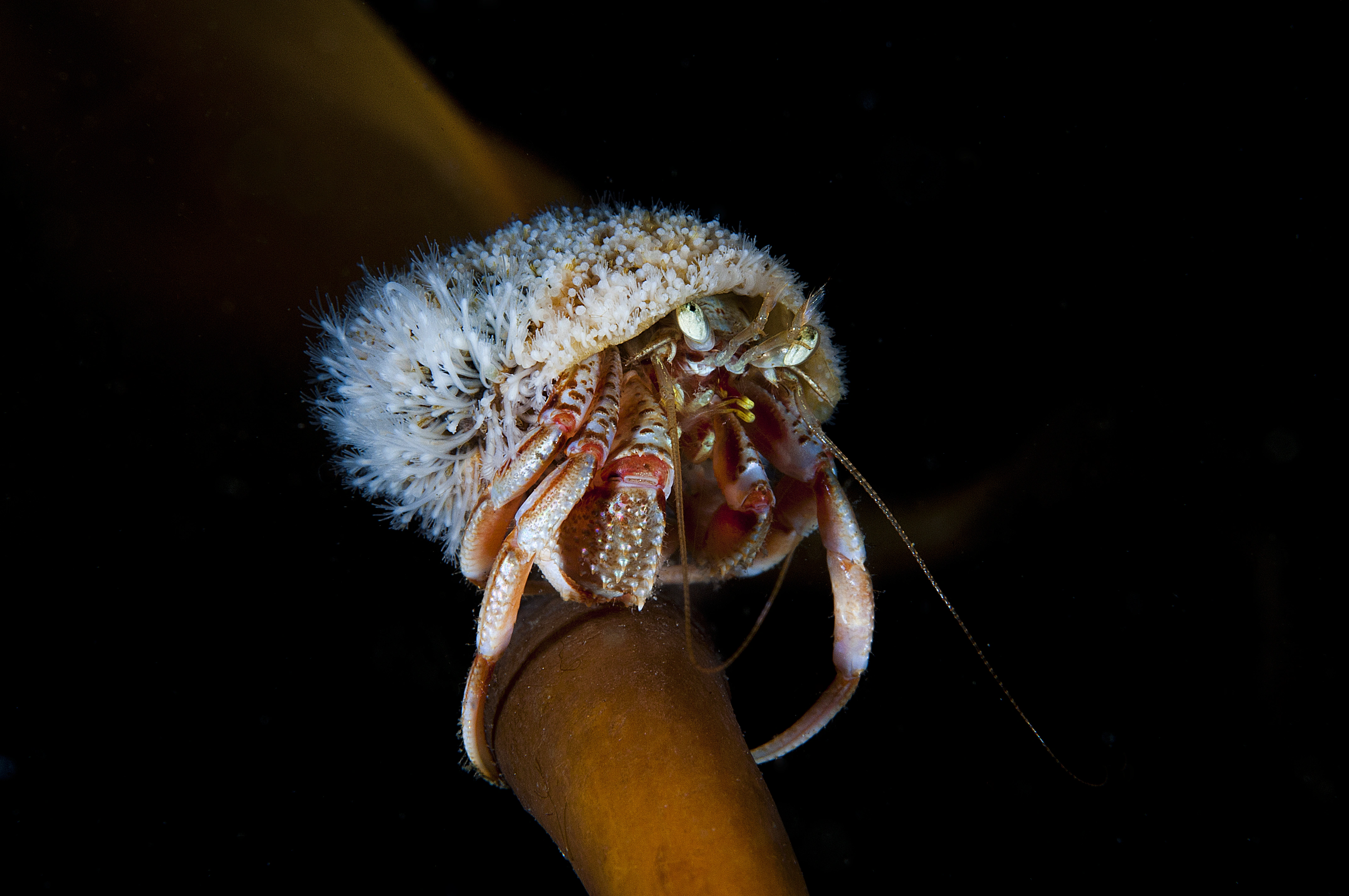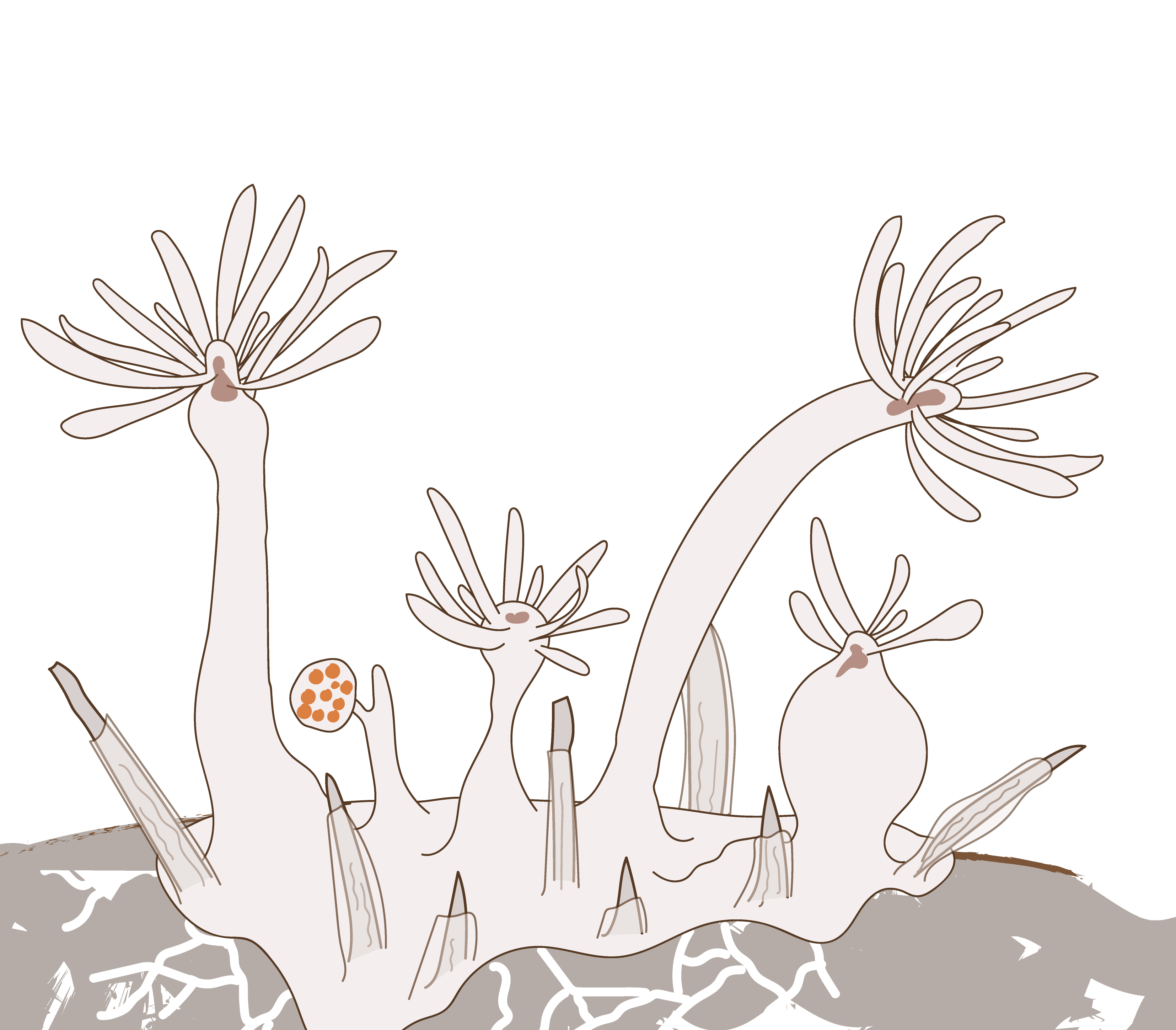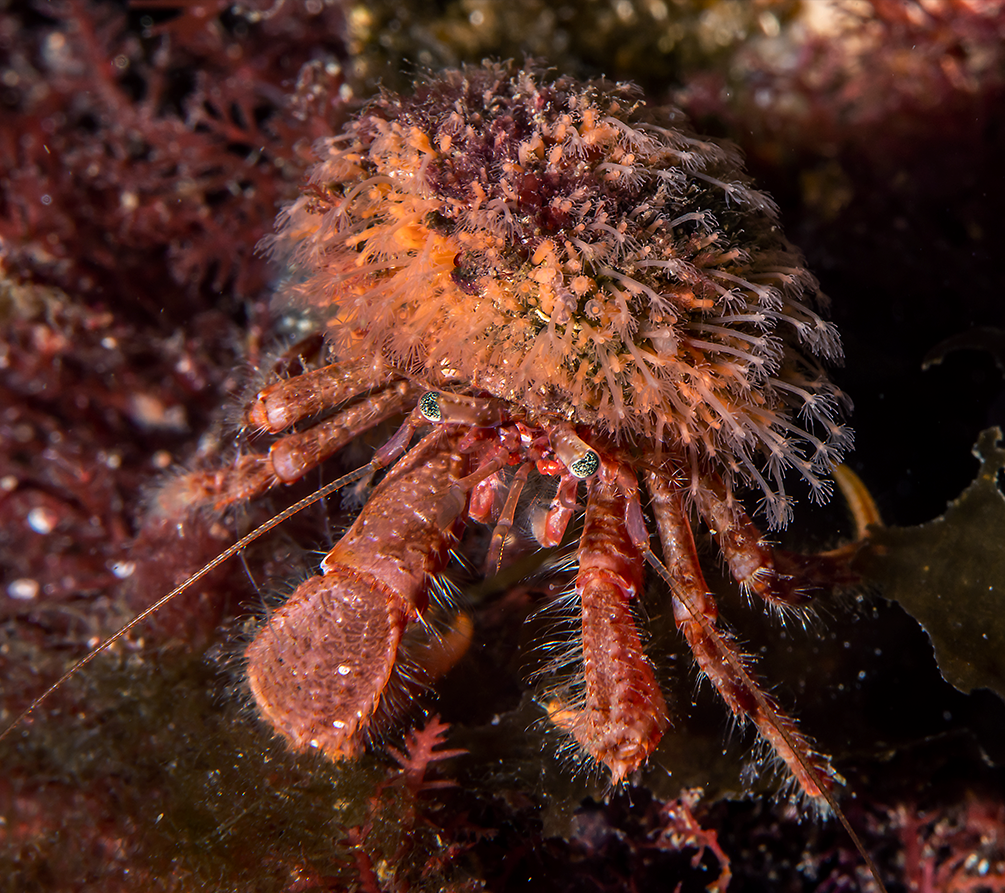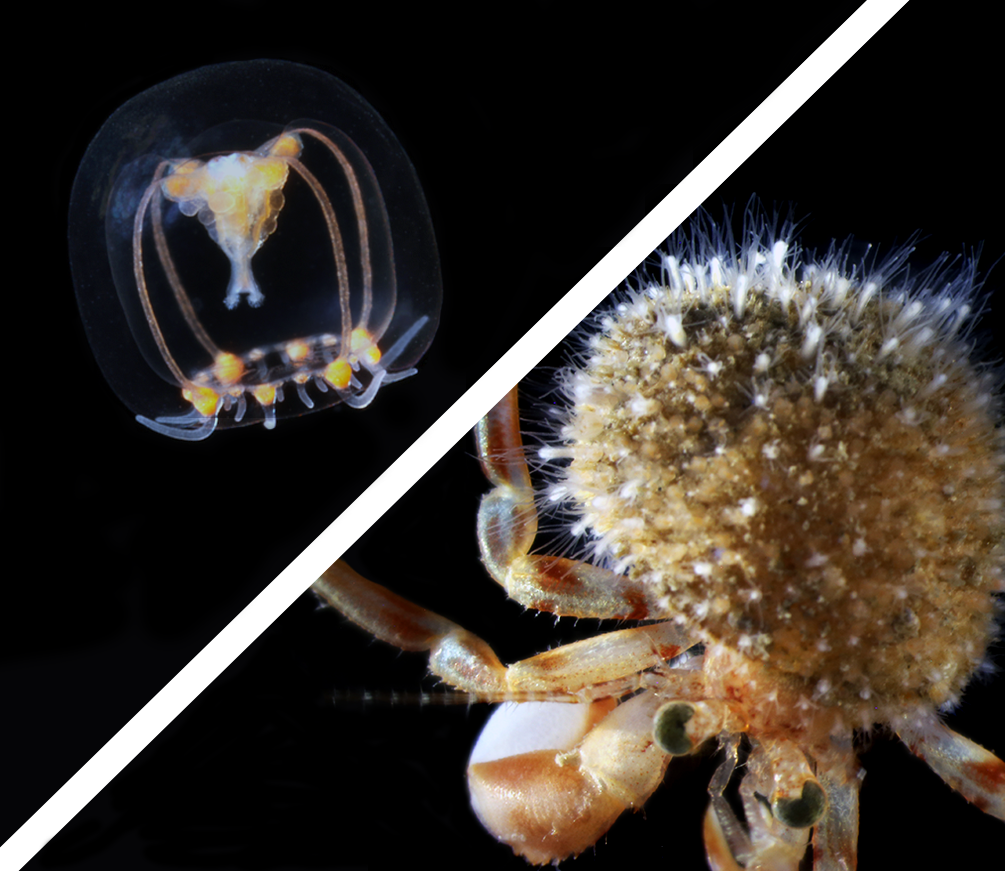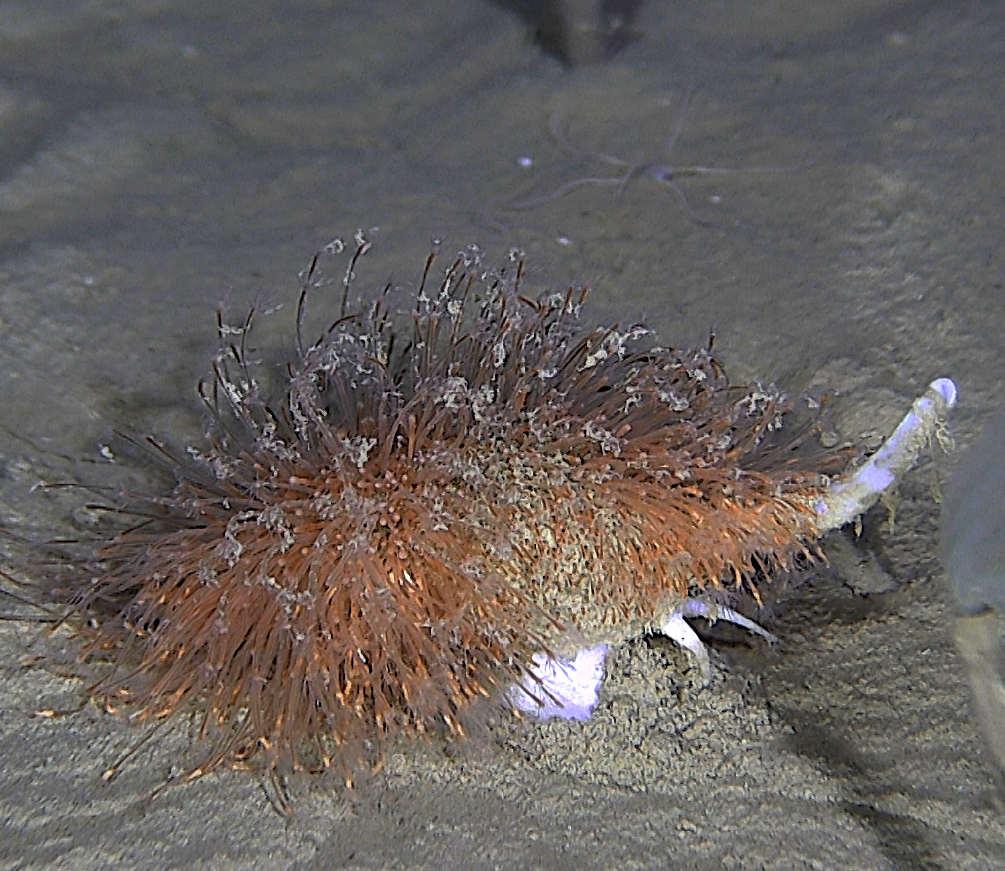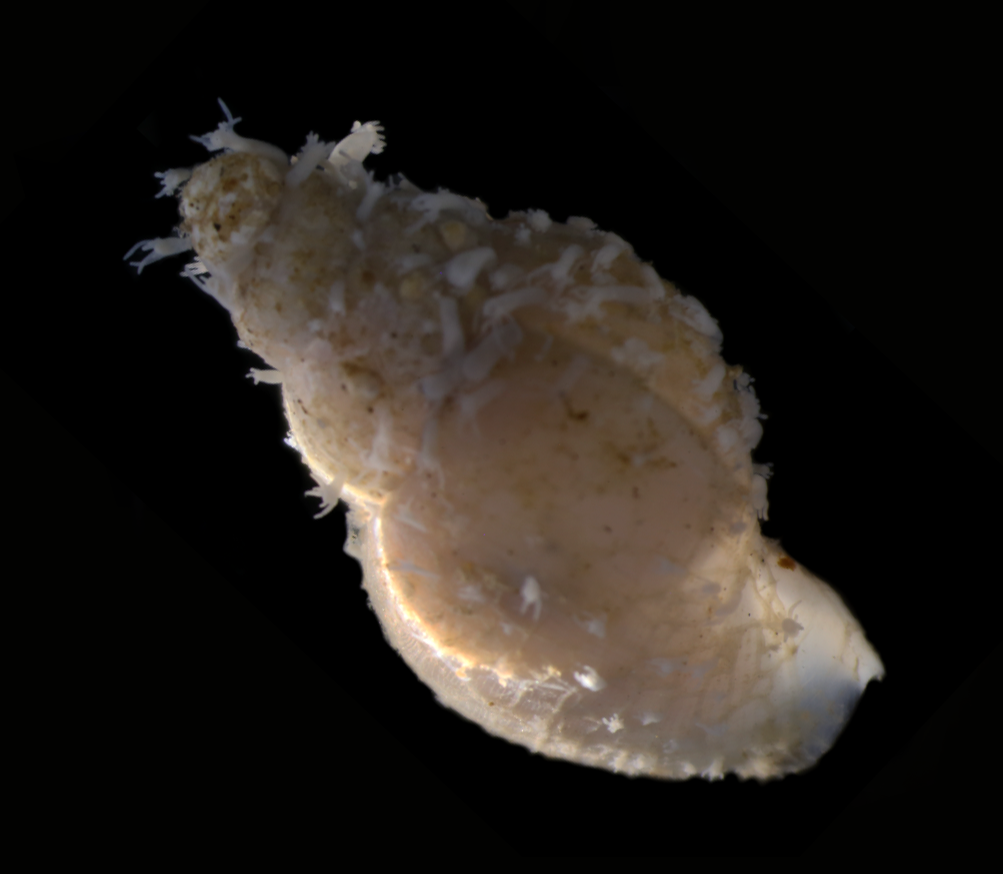Hydractinia
With approximately 80 species, Hydractinia is the largest genus in the family Hydractiniidae. Four species occur in Norway. Their colonies are often found growing on snails and shells of hermit crabs. Hydractinia is a conspicuous genus that easily attracts the attention of scuba divers. Large colonies are sometimes known as snail fur because of the hairy appearance that the hydroids give to the shells they grow on.
Identification
Hydractinia colonies have the typical characteristics of the family and are almost impossible to identify when they are young and not reproductive. The gonophores of the Norwegian species of Hydractinia are always fixed sporosacs, but the gonozooids of the different species have different shapes and these and the form of the spines can help for identification. In Norway the different species of the genus have a clear preference for certain substrates, either living snails or hermit crabs, although they are not completely specific.
Look-alikes
Young colonies of Hydractinia are easily confused with those in other hydractiniid genera such as Podocoryna, Schuchertinia, and Clavactinia. The species of Hydractinia that occur in Norway differ from the Norwegian representatives of Podocoryna and Schuchertinia because they reproduce through fixed sporosacs, while Podocoryna colonies produce hydromedusae and Schuchertinia colonies produce medusoids. Likewise, within the Norwegian fauna, reproductive colonies of Hydractinia develop the sporosacs at the upper part of the polyps, while reproductive colonies of Clavactinia develop the sporosacs at the base of the polyps.
Biology, ecology and behavior
Hydractinia colonies often grow on living substrates, particularly shells either inhabited by snails or by hermit crabs. They are thought to develop intimate relationships with the organisms serving as their substrate. In these relationships they provide protection to the snail or hermit crab with their stinging cells, while at the same time they benefit by gaining new places to feed due to the movement of their substrate.
Taxonomy
The taxonomy of this genus is unsettled, and our knowledge of which species should be included in Hydractinia will surely change in the near future. Currently, Hydractinia is a catch-it-all genus that accommodates all the species that can not be placed in other hydractiniid genera.
References
Miglietta MP, Schuchert P & Cunningham CW (2009). Reconciling genealogical and morphological species in a worldwide study of the Family Hydractiniidae (Cnidaria, Hydrozoa). Zoologica Scripta 38(4):403–430.
Schuchert P (2008). The European athecate hydroids and their medusae (Hydrozoa, Cnidaria): Filifera Part 3. Revue suisse de Zoologie 115(2):221–302.
Schuchert P (2012). North-West European athecate hydroids and their medusae: keys and notes for the identification of the species. Field Studies Council. Synopsis of the British Fauna (New Series) No. 59. 364 pp.
